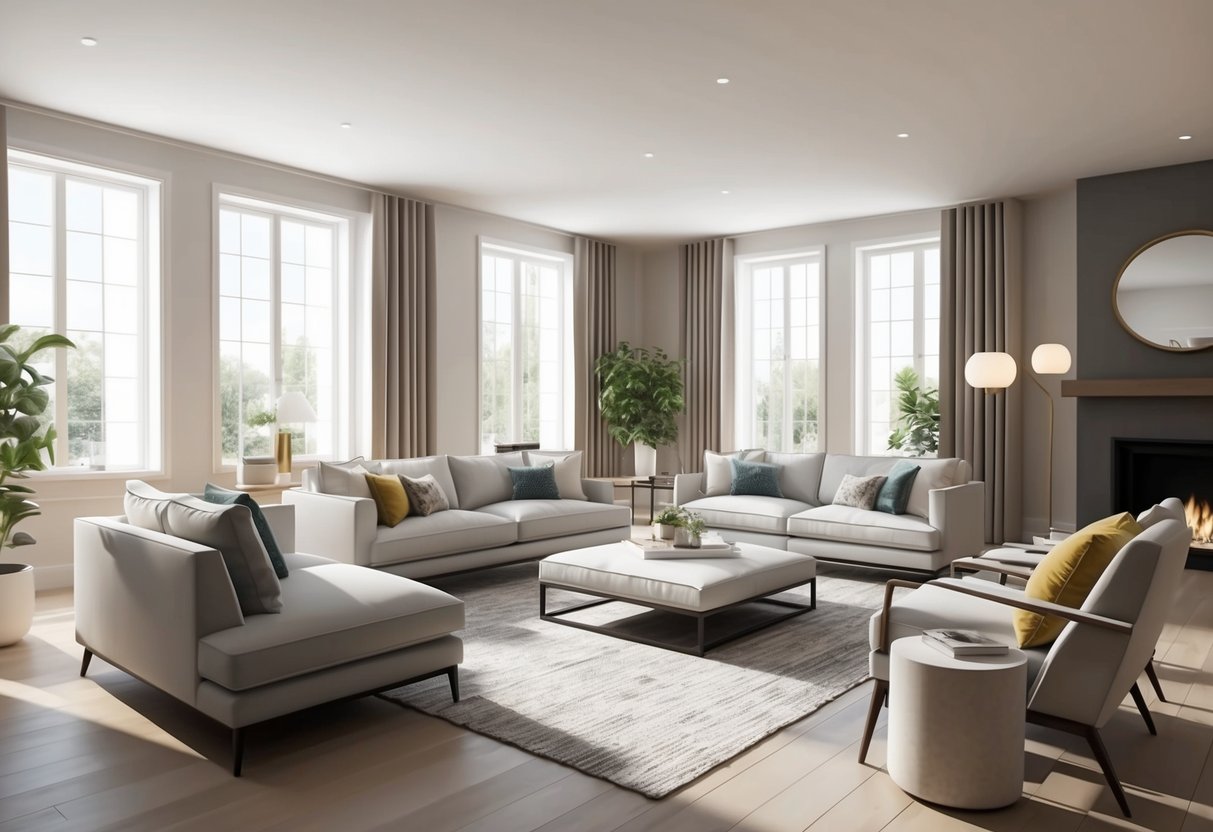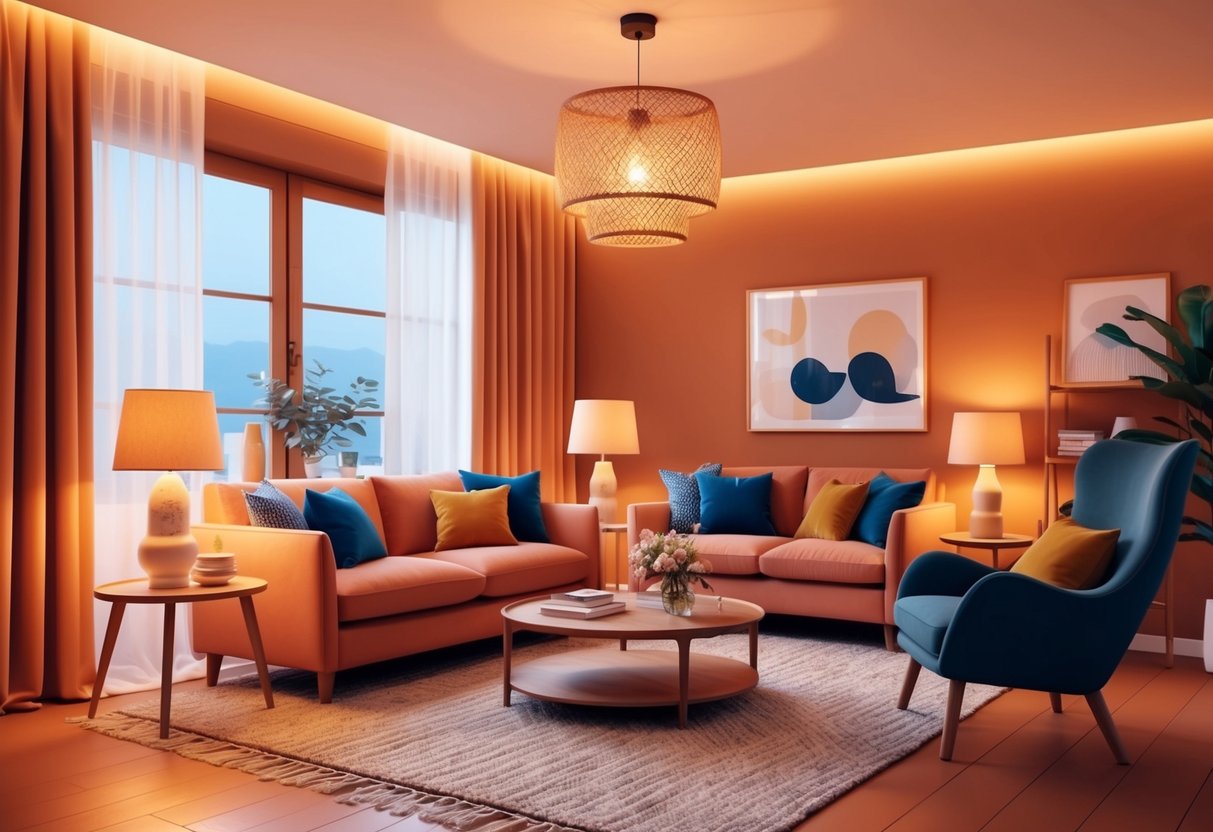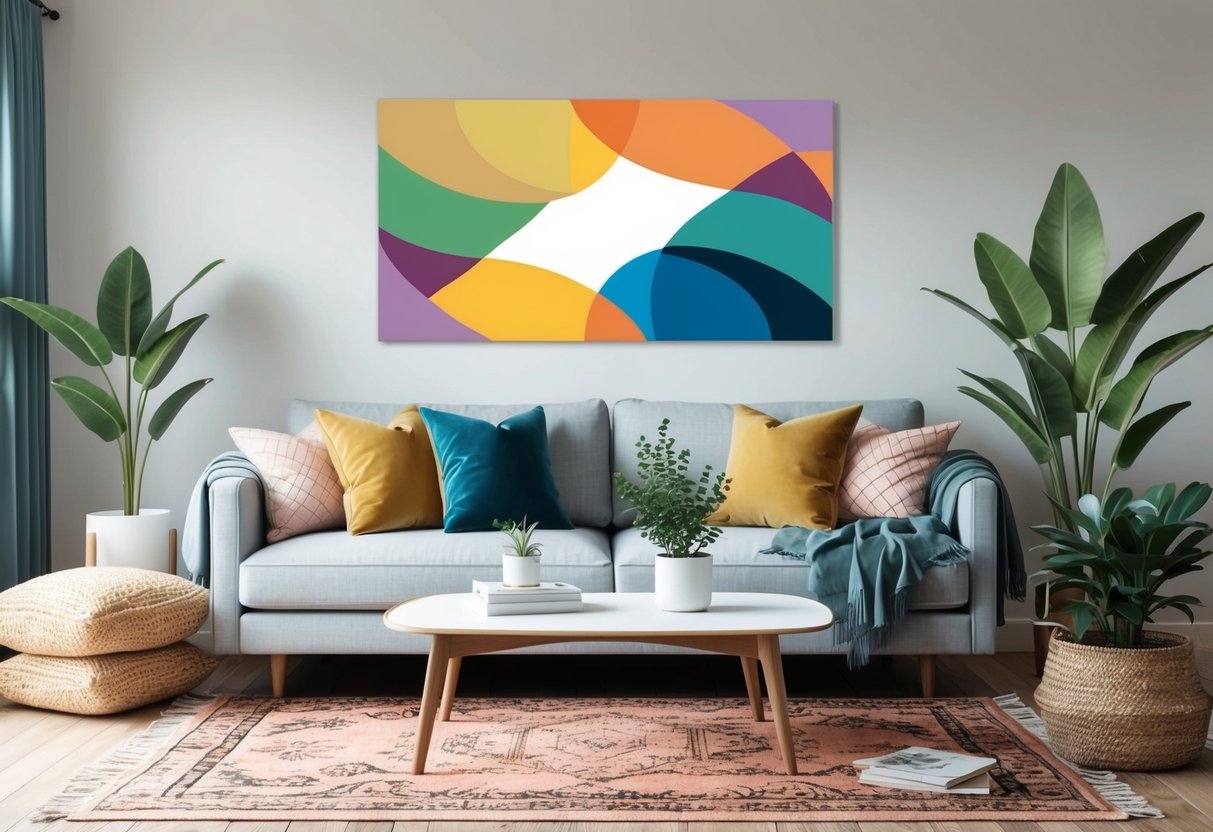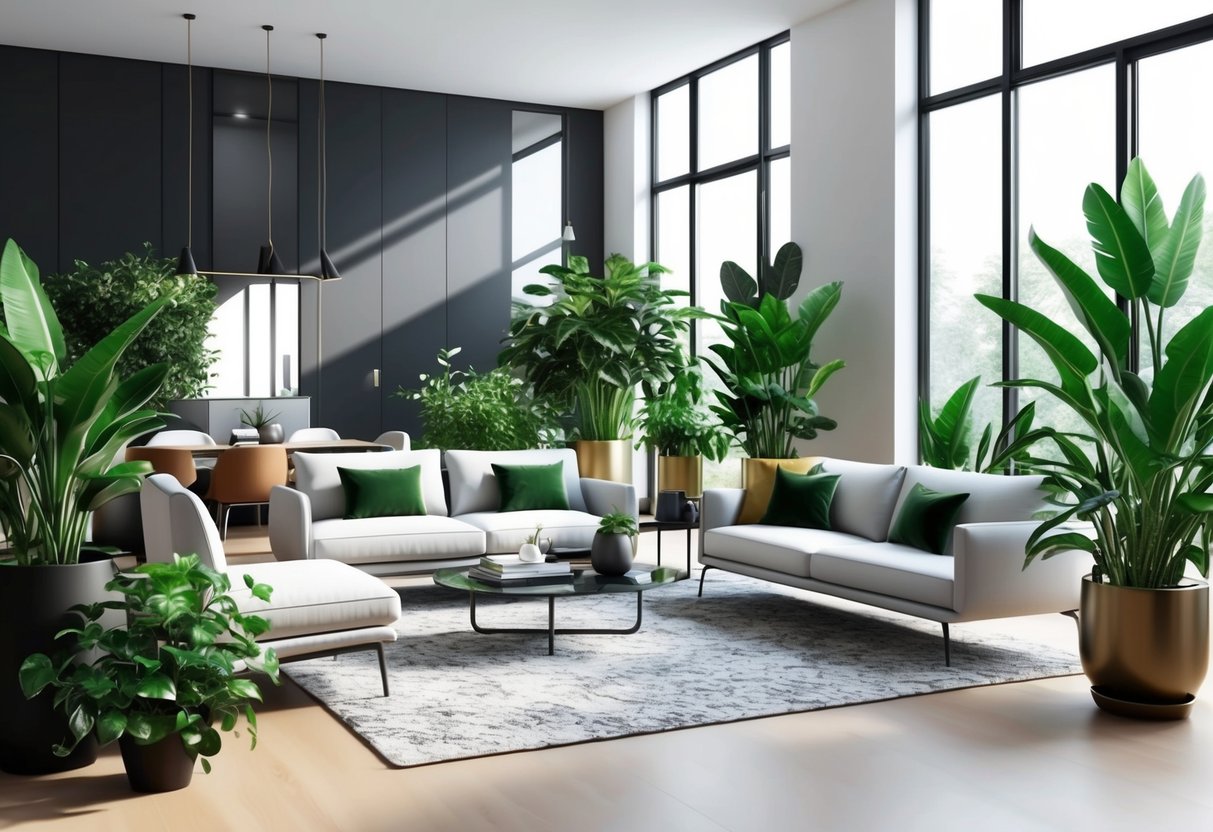
Lighting Design for Living Rooms

Effective living room lighting blends function with visual appeal. Homeowners should consider how multiple types of lighting, fixture styles, and placement can impact atmosphere, comfort, and focal points throughout the room.
Layered Lighting Techniques
Layered lighting is essential for both flexibility and ambiance in a living room. Using ambient, task, and accent lighting in combination allows the space to adapt for relaxing, entertaining, or focused activities.
Ambient lighting, generally provided by ceiling fixtures or recessed lights, fills the room with even, overall illumination. Task lighting focuses light on specific areas, such as reading chairs or workspaces, using floor lamps or adjustable sconces.
Accent lights, like wall-washers or spotlights, highlight art, plants, or architectural elements. Designing with layers helps avoid glare and shadows.
A mix of light sources on various levels, including table lamps, pendants, or uplights, gives homeowners greater control over the mood and usability of the space. For more detail, see expert tips for a layered and dynamic lighting scheme.
Selecting Fixtures and Bulbs
Choosing fixtures for living room lighting involves balancing style with function. Contemporary options like recessed lights, chandeliers, or minimalist pendants can establish the room’s design theme.
Directional floor lamps and table lamps remain popular due to their versatility and ease of movement. When selecting bulbs, consider color temperature and brightness.
Warm white LEDs (2700K–3000K) create a cozy, inviting atmosphere, while daylight bulbs are better suited to work areas. Adjustable fixtures or dimmers allow further customization throughout the day.
Matching fixture scale with room size and ceiling height keeps the lighting balanced, ensuring it isn’t too overpowering or inadequate for the space.
Using Lighting to Highlight Features
Accent lighting draws attention to the living room’s standout features and makes the design more dynamic. Spotlights or picture lights can be installed to highlight artwork or display shelves.
LED strips work well under shelves, behind TVs, or along architectural details like coving or niches. Place floor lamps to illuminate reading nooks or textured surfaces, creating zones within the room.
Uplighting tall houseplants or textured walls adds warmth and depth. Experimenting with angles and beam spread lets homeowners emphasize textures and colors without harsh glare.
For tips on highlighting living room features with expert lighting, visit this expert guide to lighting your sitting room.
Incorporating Wall Art and Decorative Elements

Choosing and placing wall art and mirrors in a living room can set the mood, highlight architectural features, and make the area feel more spacious. Thoughtful use of these decor elements transforms bare walls into focal points and supports a unified look throughout the space.
Arranging Wall Art Effectively
When selecting wall art, it’s important to consider scale, color palette, and style to ensure the piece enhances the room instead of overpowering it. A large statement artwork can anchor a wall, but smaller pieces grouped together add visual interest and create a curated effect.
The placement of art should center at eye level—typically about 57 to 60 inches from the floor to the center of the artwork. For best results, align art with key furniture pieces.
For example, hanging a series of prints above a sofa or arranging a gallery wall above a console table draws the eye and balances the room. Mixing frame types and sizes provides character, while maintaining a consistent color story ensures cohesion.
For more guidance, readers can explore tips on arranging artwork from this comprehensive living room guide.
Using Mirrors to Expand Space
Mirrors are a practical decorative element that enhance aesthetics and make a small or dim room appear larger and brighter. Placing a large mirror opposite a window maximizes natural light, instantly making the area feel more open.
The shape and frame of a mirror should coordinate with existing décor. Oversized statement mirrors can act as the focal point.
Collections of smaller mirrors arranged creatively add depth. For those seeking to exaggerate a sense of space or highlight a room’s features, strategically placed mirrors create the illusion of extra square footage.
Designers often rely on mirrors to double visual space and add sophistication, as outlined in various living room decor strategies.
Bringing Nature Indoors with Plants

Adding indoor plants to a living room improves air quality, boosts mood, and creates a welcoming atmosphere. For a successful design, careful plant selection and creative styling are essential.
Choosing the Right Plants
The ideal indoor plants are low-maintenance and suited to the room’s light and humidity conditions. Popular options like snake plants, pothos, and peace lilies thrive in most interiors.
Ferns and fiddle leaf figs can provide a bold focal point with their lush foliage. It’s important to avoid common mistakes, such as placing sun-loving plants in shaded areas or overwatering species that prefer dryness.
Grouping drought-tolerant succulents together on sunny windowsills can bring texture. Larger monstera or rubber plants anchor corners with dramatic leaves.
When planning, consider each plant’s mature size and growth habit. Fast-growing species might quickly outgrow small pots or tight spaces, disrupting the room’s balance.
Matching pots and containers to the room’s color palette helps create a harmonious look without distraction. Learn more about plant selection in living spaces at this guide to bringing nature indoors through interior plants.
Styling Plants Creatively
Plants become design features when displayed thoughtfully. Arranging plants at different heights with the help of plant stands or wall shelves draws the eye and gives the room depth.
Hanging planters and trailing vines add vertical interest, especially in compact spaces. Integrate statement plants such as tall palms or indoor trees to define zones within open layouts.
Pairing greenery with modern materials—like glass, metal, or minimalist ceramics—creates striking contrast and keeps the look current. Indoor plant arrangements and even living walls can transform a living area into a lively, oxygen-rich environment, highlighting how biophilic design can enhance well-being.
For best results, consider using a consistent style or repeated shape in plant containers and coordinate with existing decor colors and textures. Rotate or rearrange plants seasonally to refresh the space and encourage healthy growth.
Integrating plants in varied and creative ways ensures the room feels inviting and visually balanced.